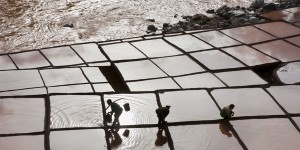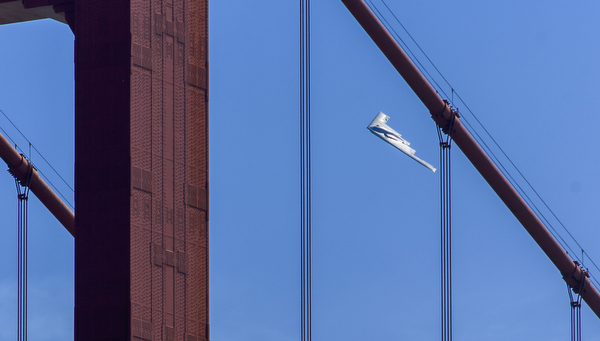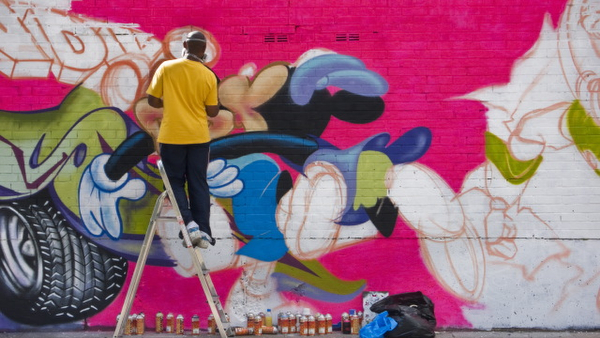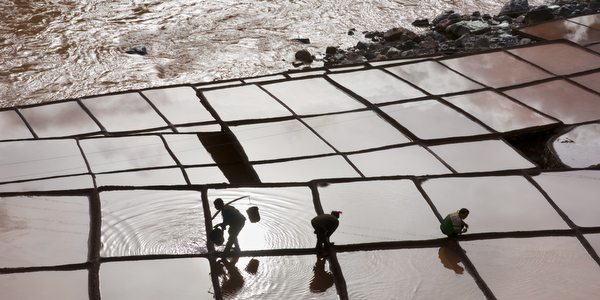 Photos: Courtesy Michael Freeman
Photos: Courtesy Michael Freeman
December 1, 2011
By Jordan Schatz
Reporter/News Writer
Limelight
British photographer Michael Freeman has published more than 120 books on photography and is best known for his work in Time-Life and Smithsonian magazines. He is often recognized for his signature style and spectacular photos from around the globe.
His storied career spans 40 years, beginning with his first book Athens, which was published by Time-Life in 1978. In December, Freeman will begin work on his latest book, a photo-tour of the famous Mekong River in Southeast Asia. He will take readers and photography enthusiasts through China, Thailand, Burma, Cambodia and Vietnam.
In an interview last month with DC Spotlight’s editor Wendy Thompson, Freeman explained why he became a photographer, his rise to success, the current culture of photography and his most recent project that will take readers for a breathtaking ride down the Mekong River.
Wendy Thompson: When did you decide you wanted to pursue a career in photography?

Michael Freeman: It started slowly. I ended up studying at Oxford University. I went into advertising, which, at the time, was business smart and interesting. It was good for a few years but during that time, what was going on inside me was my passion for photography.
I remember my account supervisor managed to negotiate a sabbatical. That means that you get paid. And he went around the world with his wife. I felt [that was]a pretty neat idea so I negotiated. I got two and a half months sabbatical and I took my second-hand canvas that I had bought and went up the Amazon [River].
Time-Life used his photographs for a series of books titled, The World’s Wild Pleasures. At that point, Freeman opted to resign from the ad agency where he worked and began his pursuit of a career in photography.
Wendy Thompson: How did you go from one field to another field? How do you bridge that gap to get to what you loved to do?
Michael Freeman: It’s very simple, you resign. Then you don’t have a job. That really focuses your attention quite marvelously apart from anything else, paying the rent, which wasn’t very much at that time. I thought, well if worst comes to worst I can work in a bar in the evening. But it never came to that. I just went around showing my work to anyone I can think of. I’d go to newsstands, look through the magazines, look for obscure magazines that I might stand a better chance at getting work at than the really big ones and that worked pretty well actually. I gradually worked my way up that particular ladder until the point of getting a book.

Wendy Thompson: So having done this for such a long time, what would you say is the current culture of photography with mainstream photography changing so much with digital and things like that? How has it changed?
Michael Freeman: It’s changing so much and so fast it’s difficult. It’s almost impossible to get a complete handle on what the changes are or how they’re going to end up. A lot of professional photographers think it’s terrible and it’s changing life as they know it
Well, change always happens and it’s true that the era of big magazine assignments, which was wonderful and you got a great show and [it was]very satisfying to do. These are declining rapidly, and they are much more limited. And they were very good, but there was a price to pay. Very few photographers got to them. Now, the Internet and digital opened everything up. It’s created new opportunity and new problems.
Wendy Thompson: What’s your latest book?
Michael Freeman: It’s a book called The Tea Horse Road. It’s about an ancient trade route from Southwest China to Tibet, dated the 7th century, when tea was being transported on horseback over 3,000 kilometers of trails up to Lapsa, and in return, warhorses were carried back for the Imperial Army…I spent two years on it…It’s not what I would call a travel book because it goes into the ethnobotany of tea, culture, politics [and]history. [It’s a] very rich subject and also one that is hardly known in the West, but every Chinese school child knows about it.
Wendy Thompson: What is your current project?
Michael Freeman: I’m on this publicity tour around various cities in the [United States] and we have academic hosts in each city. I’m giving a talk to students. We invite one student to have a day with me and we would shoot together. They could ask me questions, things like that. That’s actually what we’d been doing.
Wendy Thompson: So what’s coming up on your schedule? What your next project?
Michael Freeman: I’m finishing the United States tour in Philadelphia and New York and next month I will be doing a book on the Mekong River. It rises in China and then goes through Laos, Thailand, Burma, Cambodia [and]Vietnam. [It will be a] successor to the Tea Horse Road.
Freeman contributed to over 40 assignments for Smithsonian magazine. His major works include photography handbooks, field guides and a multitude of photo stories including: The Tea Horse Road, Sudan: The Land and the People, and The Spirit of Asia: Journeys to the Sacred Places of the East. Freeman lives in London, England. Follow Freeman’s travels and view his photography at http://www.michaelfreemanphoto.com.




